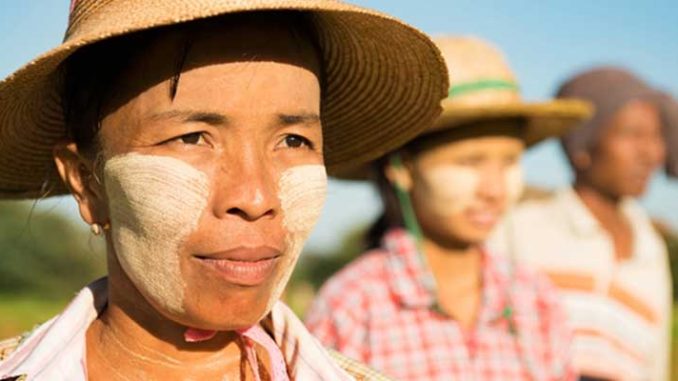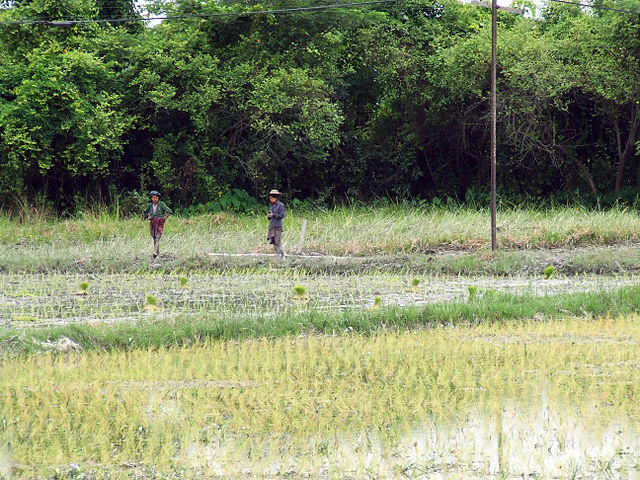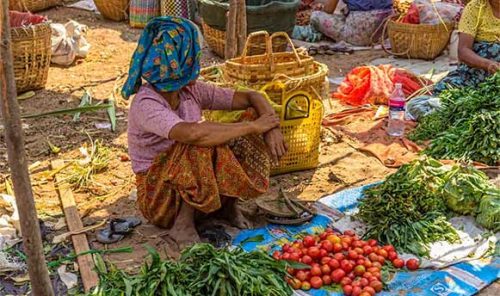
Under the Thein Sein administration there has been much dialogue on reforming Myanmar’s agricultural sector. The first of the ‘national workshops’ that have been such a feature of the economic reform narrative in Myanmar was devoted to agriculture. This came up with a number of recommendations, mostly concerned with increasing productivity through improvements to rural infrastructure, access to affordable inputs, and expanded credit availability (focussing on microfinance). Other gatherings devoted to agriculture convened since, many sponsored by multilateral institutions, development agencies, and (not least) potential foreign investors, have taken up similar themes.
Stagnant Reforms
Despite this, and notwithstanding its rhetorical prominence, the record of reforms actually implemented in Myanmar’s agricultural sector is, as yet, slim. A comprehensive transformation of agriculture in Myanmar is urgently needed, beginning with the removal of the market distortions that continue to bedevil the sector. Prominent in this context are the numerous production controls, export restrictions, and procurement orders that, despite being formally discouraged by the central government, linger from the previous military regime. Myanmar’s success as an exporter of beans and pulses in recent years (it is now one of the world’s largest exporters of these commodities) demonstrates that its farmers and traders can respond vigorously to market signals. The trade in beans and pulses was liberalised a decade ago, in contrast to the ever-present hand of state intervention in most other commodities.
But lifting the restrictions and limitations on trade, while necessary, will not be sufficient to rehabilitate Myanmar’s degraded agricultural sector. Under Myanmar’s past military regimes rural areas were chronically neglected. As a consequence, rural infrastructure is in a parlous state, and many villages are without viable roads to connect them to national (or even regional) markets. Fertilizer is unavailable in many locations, irrigation systems have silted up, seeds, pesticides, pumps and other apparatus are largely absent, and fuel of most varieties is often beyond financial reach. Market liberalization will solve some of these maladies but, in the short to medium-run, Myanmar’s agricultural sector 1 will require substantial public expenditure and investment, especially on roads, bridges, irrigation, power generation and distribution, as well as on environmental and resource management systems.

Necessary Further Reforms and Initiatives
Briefly outlined below are some of the measures necessary to transform agriculture in Myanmar. In sympathy with the necessary measures more broadly to transform Myanmar’s economy, they are also synonymous with what might be regarded as ‘international best practices’ as they are currently being promoted in the country by a number of agencies (including the World Bank, U.S. Agency for International Development (USAID), and various UN bodies): 2
- Ending Myanmar’s export licensing regime. At present this artificially restricts the market for the production of Myanmar’s cultivators, limiting their sale options and putting downward pressure on farm-gate prices. Producing for world markets would also have the effect of increasing the incentives to produce high quality rice, the price of which is considerably greater than the broken rice varieties Myanmar currently exports to Africa and a limited range of other overseas markets.
- Removing the remaining internal geographic restrictions on the trade and sale of rice. These restrictions deny Myanmar’s farmers the ability to move their product into areas of shortage (where prices are high), and to generally enjoy the gains from trade. In essence, they divide Myanmar up into multiple small markets in which prices are volatile and food security is precarious. Removing these restrictions on the internal trade in agricultural products in Myanmar can be very much counted amongst the “low hanging fruit” of useful reforms.
- Granting Myanmar’s farmers complete “production rights”. For decades Myanmar’s farmers have been directed into the production of certain crops (mostly rice) regardless of local conditions. This has had the effect of reducing yields and lowering farmer incomes. Freed to make their own decisions of ‘what, how and when’ to produce could allow Myanmar’s farmers to move into the production of higher yielding crops and activities suited to local conditions (such as diversifying into horticulture, small livestock, fisheries and so on). The granting of “production rights” in this manner in Vietnam (to cite just one relevant model for Myanmar) has been the single most important policy behind that country’s emergence as a significant global food producer.
- Promoting market knowledge. One of the most transformative innovations in agriculture globally has come about because of the spread of mobile phone use, and from this the access granted to market information. In Africa this transformation is readily visible, where it is manifested simply but powerfully in the ability of farmers and others to compare prices in different township markets, and deliver their product accordingly. Reforms to Myanmar’s telecommunications sector are currently under way, although the outcome remains uncertain.
- Implementing better exchange rate and import policies. One “macroeconomic” element that could have a significant bearing on the incomes of Myanmar’s farmers is the exchange rate. 3 In a welcome move last year Myanmar’s government moved the Myanmar kyat towards a “managed float” regime, but strong capital flows and resource earnings have caused the rate to greatly appreciate (to as high as K850:USD1). This has the effect of decreasing any foreign earnings of Myanmar’s farmers in two ways. Firstly, it makes Myanmar’s primary exports more expensive, and thus less able to compete against other suppliers (especially those of other Southeast Asian nations that actively keep their exchange rates low). Secondly, and where the commodity concerned in priced and paid for in $US, it reduces the kyat earnings of farmers once the export revenues are brought home. Of course, care must be taken in administratively targeting a particular exchange rate, but at the least broad policy could be designed to support an exchange rate that enhanced Myanmar’s competitiveness. Necessary reforms must also be implemented to liberalise Myanmar’s import licensing system. Such a move would “naturally” lower the value of the kyat, while simultaneously granting Myanmar’s producers and consumers greater access to cheaper and better quality finished goods (capital and consumer), as well as productive inputs.
- Promoting agricultural insurance. In many other countries, farmers’ incomes are protected against excessive price and output downturns (and against natural disasters) via agricultural insurance schemes. Particularly useful in this context are so-called index-based insurance arrangements. Under these schemes, farmers are paid an indemnity when yields in a certain area fall below a value determined by long-run averages (or other benchmarks as appropriate). The utility of these type of insurance schemes include simplicity (they do not require farm by farm assessment for instance) and transparency (the data is open and independently arrived at). Such schemes are in place in the United States, India, Canada, Mongolia, and a range of other countries, and they are a particular favourite of the World Bank. A policy choice that presents itself is the degree to which the premiums charged for such insurance is subsidized by the government. Many of the countries applying such insurance do provide substantial subsidies (such subsidies have the virtue of not breaching commitments implied by membership of the World Trade Organisation [WTO]).
- Of course, one of the most significant costs Myanmar’s farmers face comes from the lack of affordable formal rural finance. Formal credit in adequate volumes is not available to almost any farmer in Myanmar outside of the largest conglomerates, meaning that small-scale moneylenders are the sole recourse of most people. The interest rates charged by such moneylenders are high, with 10% per month being typical. As a consequence of the lack of affordable credit, many cultivators in Myanmar simply do without, and no longer employ productivity-enhancing inputs such as fertiliser, while similarly adopting planting and harvesting methods that minimise costs, but also reduce output. Meanwhile, farmers that have outstanding debts are increasingly caught in a debt/default spiral that too often ends in the loss of their land-use rights, and pauperisation.
- Re-creating a functioning rural banking system in Myanmar, accordingly, should be a first-order priority, beginning with some immediate reforms that can start the capital flowing. These include: removing the restrictions on Myanmar’s private banks on lending to farmers; removing the interest rate caps and floors that apply to banks; expanding allowable collateral that banks can receive to include all agricultural crops; allowing the entry of respected global banks with deep commodity supply-chain connections; continuing to promote the (prudent) growth of microfinance in Myanmar; reforming and recapitalising the existing Myanmar Agricultural Development Bank (MADB).
Land Reform
One of the most impenetrable barriers to the improvement of Myanmar’s agricultural sector is the fact that all rural land is formally owned by the State. In late 2011 two new bills were introduced before Myanmar’s parliament. Ostensibly designed to give farmers security of tenure and tradeable land rights, the Farmland Bill and the Vacant, Fallow and Virgin Lands Bill in fact have delivered little but greater land ‘grabbing’ opportunities for cronies and large agribusiness. Continuing also to contain provisions that deny farmers the right to decide for themselves “what, when and how” to cultivate, their most important clauses seem to simply ensure the rights of a new executive body (to the headed by the Minister for Agriculture and Irrigation) to make what amounts to ‘eminent domain’ determinations that have already been used to transfer land away from small farmers.

Giving Myanmar’s cultivators meaningful title over their lands, and security in their tenure, should be a top priority of the government. In the immediate term this will require revisiting the Laws above, while bringing down something of a short-term moratorium on large-scale rural land transfers. Beyond these immediate actions, Myanmar should examine the experiences of other countries. The whole question of land title in transition scenarios is something that many countries have had to grapple with over the last two decades, and along the way a host of innovative methodologies have emerged (from protected and near universal “micro-plots” to various ways of recognising customary tenure practices).
Conclusion
Myanmar’s agricultural sector is home to the majority of its people, and it remains the largest contributor to the country’s GDP. Longer term, and in the context of seminal increases in global food prices, the voracious demands of its near neighbours, and unusually abundant water supplies, agriculture in Myanmar is also the most likely enabler of the country’s economic renaissance. The task of Myanmar’s current government is to make manifest this potential, and in so doing redeem the country’s rightful place as a fount of peace and prosperity in Asia.
Sean Turnell and Wylie Bradford
Department of Economics, Macquarie University
Kyoto Review of Southeast Asia. Issue 14 (September 2013). Myanmar
Notes:
- For more details on the current state of Myanmar’s agricultural sector, see Steven Haggblade et al, A Strategic Agricultural Sector and Food Security Diagnostic for Myanmar, Report for USAID, 2013 <http://fsg.afre.msu.edu/Burma/> (accessed May 12, 2013). ↩
- See Haggblade et al (2013) op.cit; and, World Bank (2013), Myanmar – Interim Strategy Note for the Period FY 13-14, 30 October 2012 <http://www-wds.worldbank.org/external/default/WDSContentServer/WDSP/IB/2012/10/12/000386194_20121012024925/Rendered/PDF/724580ISN0IDA00Official0Use0Only090.pdf> (accessed May 20, 2013). ↩
- For more on the damage being wrought by Myanmar’s rising exchange rate, see David Dapice, Myanmar: Negotiating National Building, Ash Center, Harvard Kennedy School, 31 May 2012 <http://www.ash.harvard.edu/extension/ash/docs/nationbuilding.pdf> (accessed May 19, 2013). ↩
